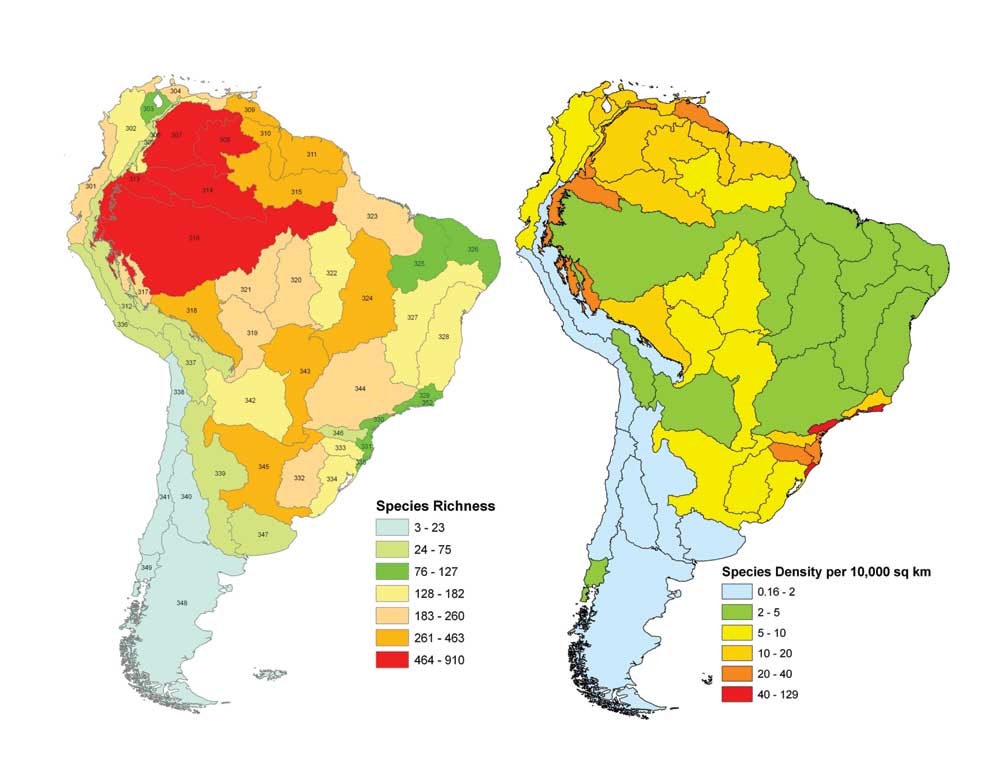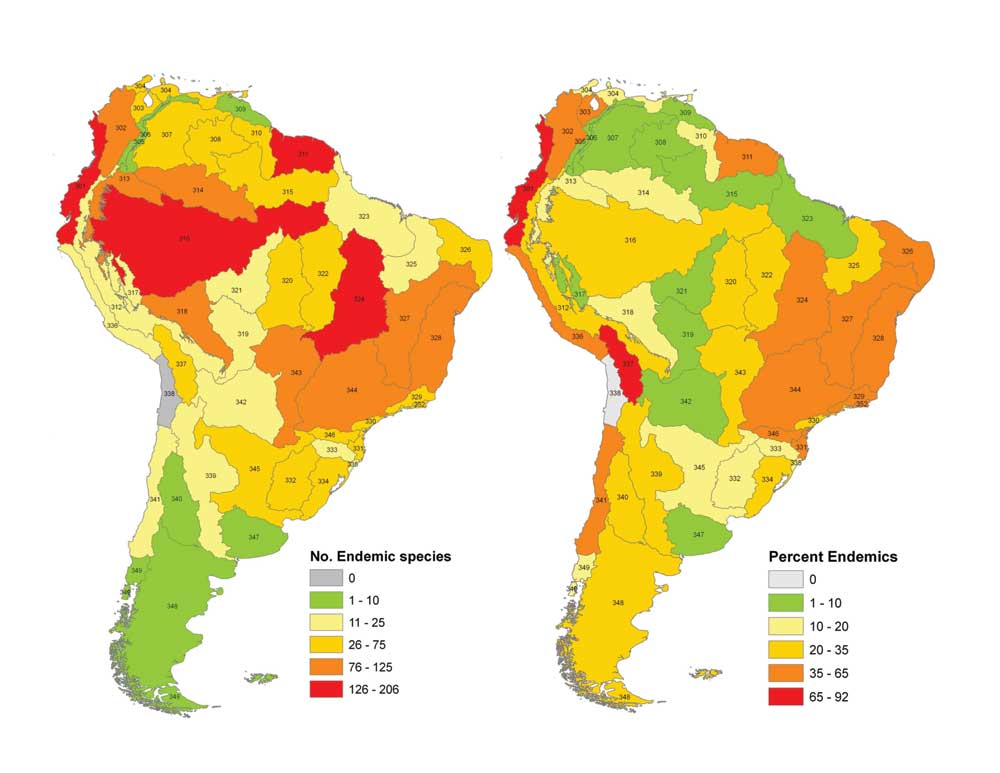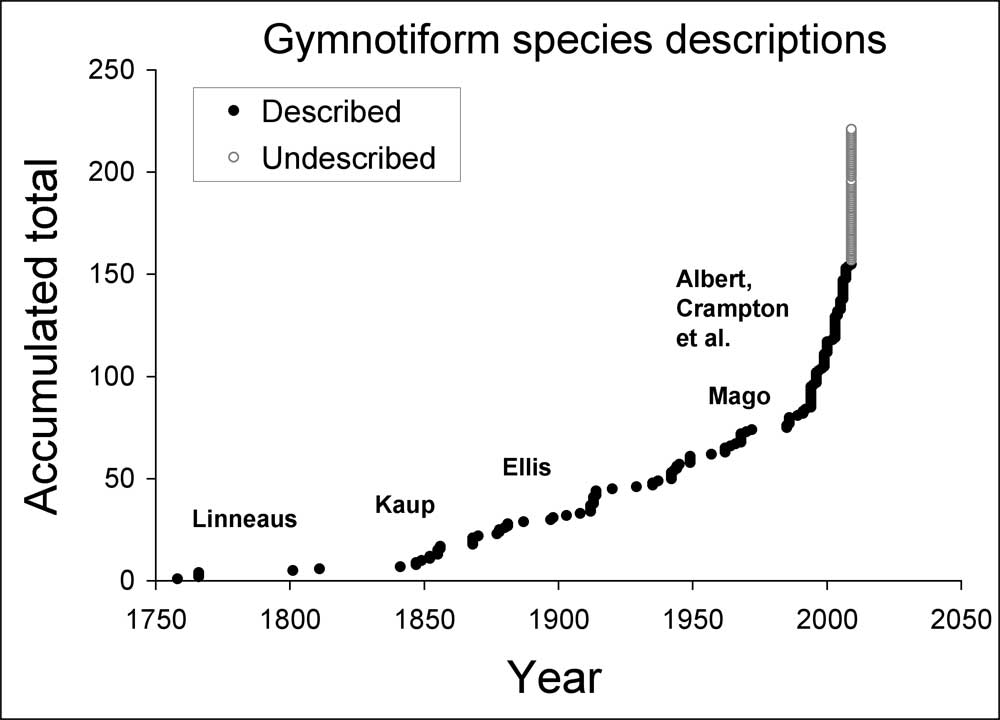|
New species of electric fishes
|
||||||||||||||||||||||||||||
| Species descriptions are the baseline documentation of biodiversity. The actual elements of biodiversity include all products of the evolutionary process, from genetic variation within populations to broad scale features of ecosystems and landscapes. In practice, however, only formally described species are visible on faunal lists to scientists and conservationists. Species richness is the basic data used in most biodiversity assays. | ||||||||||||||||||||||||||||
 |
 |
|||||||||||||||||||||||||||
| Patterns of species richness and endemism in South American freshwater fishes. Data collected by Dr. Paulo Petry for 4,581 species, representing about 45% of the freshwater fish species of the world, and about 7% of all living vertebrate species. Areas are freshwater ecoregion from Abell et al. (2008). Note the Amazon-Guiana-Orinoco core is the region of highest species richness, and that small ecoregions have high species density (e.g., southeastern coast of Brazil).Note also the highest amounts of endemism are found in some peripheral areas, especially the Atlantic Coast of Brazil and the Pacific coast of Colombia. Map 1: Species richness (numbers of species). Map 2: Species density (number of species per million km2). Map 3: Number of species endemic to ecoregions. Map 4: Percent endemism (proportion of fauna that is endemic to that ecoregion). | ||||||||||||||||||||||||||||
| The actual number of gymnotiform species in the wild is much greater than has previously been recognized. There are currently about 135 valid (formally described) species, and about another 100 undescribed species already known in museum collections awaiting description. Further, new species are being collected from the wild every year. What this means is that species must be named in order to board the arc. In most areas of the world, numbers of threatened and endangered are used to set priorities for habitat preservation. A main component of research in the Albert Lab is to collect and describe new species. To date Dr. Albert with colleagues and students have described 35 species of Neotropical electric fishes (Gymnotiformes), and many more species are currently in the process of being prepared for publication. | ||||||||||||||||||||||||||||
 |
||||||||||||||||||||||||||||
| Taxonomic history of gymnotiform electric fishes from Linneaus to the present, showing the rapid growth of our understanding of the diversity in this group. | ||||||||||||||||||||||||||||
| Home | Research | Teaching | People | Publications | In the Lab | |||||||||||||||||||||||